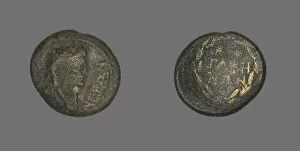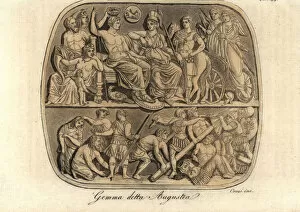Germanicus Collection
"Germanicus: A Legacy of Power and Tragedy" In the wake of a great loss, Agrippina lands with the ashes of Germanicus
All Professionally Made to Order for Quick Shipping
"Germanicus: A Legacy of Power and Tragedy" In the wake of a great loss, Agrippina lands with the ashes of Germanicus, her beloved husband and Rome's revered military leader. The weight of grief is etched on her face as she carries his remains. A statue stands tall, depicting Claudius I, who succeeded Germanicus as Emperor. His reign marked by both progress and controversy, he sought to honor his brother's memory while navigating the complexities of ruling an empire. Agrippina herself was no ordinary woman; born in 14 BC, she possessed intelligence and ambition that surpassed societal expectations. Her influence extended far beyond her time, shaping the course of history through her descendants' rise to power. Caligula, also known as Gaius Julius Caesar Augustus Germanicus, followed in his father's footsteps but would be remembered for his tyrannical rule. His reign was marred by excesses and cruelty that shocked even those accustomed to Roman decadence. Emperor Claudius took on a divine persona in artistry - depicted as Jupiter himself at the Vatican Museums. This portrayal symbolized not only his authority but also highlighted the connection between him and Germanicus - brothers bound by bloodline and shared destiny. The portrait captures Germanicus' noble countenance from villa Frediani Dionigi. Carved meticulously from marble, it immortalizes a man whose life was tragically cut short but left an indelible mark on Rome's collective memory. Vipsania Agrippina graces us with her presence in this ancient Roman camp scene. As wife to Tiberius Nero Caesar Augustus (later known as Emperor Tiberius), she played a pivotal role in shaping political alliances during this tumultuous era. An idealized bust showcases Emperor Claudius once again - capturing his likeness with intricate detail carved into marble stone. It serves as a reminder that despite personal setbacks or physical impairments, true power lies in the strength of character and intellect.
















































